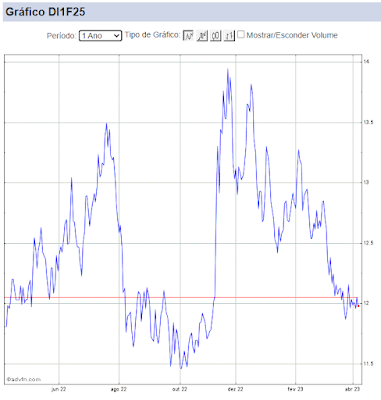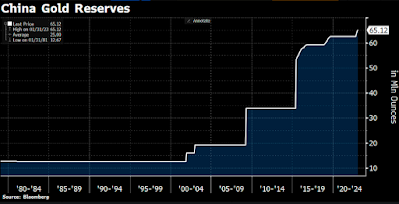Crescimento global segue positivo. Números robustos na China.
O destaque da noite ficou por conta
dos dados de exportação e importação da China.
Os números ficaram acima das expectativas do mercado, mostrando expansão das
contas externas e uma economia que ainda cresce a taxas robustas e saudáveis.
Os números divulgados hoje confirmam um cenário positivo para o crescimento
global e para a economia da China como um todo. Abaixo, cortesia do Morgan
Stanley, seguem os detalhes da divulgação:
Exports
growth picked up to 11.3% YoY in June (vs. a downwardly revised 8.3% in May;
Consensus: 8.9%; MSe: 8.8%) on a broad basis, led by DM demand and higher
value-added manufactured exports. This brings H1 growth to 8.5% YoY, on track
to reach our estimated 9% growth for the full year. Meanwhile, imports growth
rose for the second consecutive month to 17.2% YoY in June (vs. downwardly
revised 14.5% in May; Consensus: 14.5%; MSe: 14.4%). While stronger external
demand has boosted processing imports, domestic demand has likely held steady,
reflected by stronger ordinary goods import growth. As a result, the trade
surplus edged up to US$42.8bn in June from US$40.5bn in May.
No Brasil, a mídia continua dando atenção ao anuncio de condenação ao
ex-presidente Lula, divulgada na tarde de ontem, em primeira instância, pelo
juiz Sergio Moro. No campo político, o presidente Michel Temer ainda luta pela
sua permanência no cargo, mas não há novidades relevantes nesta frente.
A agenda do dia será importante, com
Jobless Claims, PPI e Retail Sales nos EUA.
Acho válido voltar um pouco no tema
do discurso de Yellen ontem, que acabou sendo interpretado como dovish pelo mercado, dando ímpeto a um
forte movimento de “risk-on” ao redor do mundo. O Morgan Stanley fez uma
análise um pouco diferente do discurso, mostrando que Yellen tentou ser o mais
neutro possível em relação aos sinais recentes, mas acabou sendo interpretada
de forma diferente. Abaixo, segue a análise do Morgan Stanley:
Treasuries
posted good 7-year-led gains Wednesday, and another rate hike this year was
priced down to 50/50 after a surprisingly strong reaction to prepared testimony
from Fed Chair Yellen that was short and seemingly deliberately bland in
sending no new messages about the policy or economic outlook that weren't
reiterations of the June FOMC statement and press conference and FOMC minutes
released last week. Indeed,
particular areas of the testimony headline writers and investors seemed to be
keying in on, including saying inflation was only "partly" depressed
by transitory factors and the current neutral real fed funds is not far from
current levels, were repeated almost directly from the minutes and press
conference. The testimony noted that it "appears that the recent lower
readings on inflation are partly the result of a few unusual reductions in
certain categories of prices"; last week, the minutes said "inflation
was running somewhat below the Committee's 2 percent objective in April, partly
because of factors that appeared to be transitory." Her observations in
the testimony on the path to a neutral policy setting were directly repeated
from her June press conference (and many other similar comments over the
years). Testimony: "Because the neutral rate is currently quite low by
historical standards, the federal funds rate would not have to rise all that
much further to get to a neutral policy stance. But because we also anticipate
that the factors that are currently holding down the neutral rate will diminish
somewhat over time, additional gradual rate hikes are likely to be appropriate
over the next few years to sustain the economic expansion and return inflation
to our 2 percent goal." Press conference: "Because the neutral rate
is currently quite low by historical standards, the federal funds rate would
not have to rise all that much further to get to a neutral policy stance. But
because we also expect the neutral level of the federal funds rate to rise
somewhat over time, additional gradual rate hikes are likely to be appropriate
over the next few years to sustain the economic expansion."
There
were some notable comments from Chair Yellen in response to questions but
nothing really surprising.
Raising the inflation target is "not a subject of discussion" for the
Fed. "Special factors partly account" for recent weakness in
inflation after core PCE reached as high as 1.8% and headline nearly 2% early
in the year, it's "premature to reach the judgement that we're not
on the path to 2% inflation over the next couple of years," and it remains
"prudent" to continue removing policy accommodation "as long as
our forecast is that we're heading back to 2%." But "there could be
more going on there" with recent inflation weakness than just
"transitory" factors, so the Fed will "watch very
carefully," and inflation developments "will be a factor in
our future decisions about rate increases." First up before the next rate
hike is likely to be announcement of balance sheet reduction, which she expects
"relatively soon," but the "exact timing of this I don't think
matters a great deal." On financial conditions and asset prices, she said
she's "not trying to opine on whether they're correct" but is focused
on whether losses would have important risks of broader spillovers to financial
stability, which she said she doesn't see as a serious concern.
If
the near word-for-word repeats of policy and economic guidance from prior Fed
communications were intended by Fed Chair Yellen to send no new signals, it
didn't work. The
5-year yield opened slightly lower and dropped another 5 bp between the 8:30
release of the testimony and the 9:00 intraday low, only partially reversed
into the start of the actual hearing at 10:00, didn't move much during the
hearing, but then saw a bit more unwind after a half bp tail at the 10-year
auction. Result at the 3:00 close was a 3 to 4 bp rally on the day, with the
2-year yield down 3 bp to 1.35%, 3-year 3 bp to 1.54%, 5-year 4 bp to 1.88%,
7-year 4 bp to 2.14%, 10-year 3.5 bp to 2.33%, and 30-year 3 bp to 2.89%. Our
desk saw good macro-led buying in the belly of the Treasury curve and receiving
in swaps that seemed to be short covering to a significant extent.


Comentários
Postar um comentário